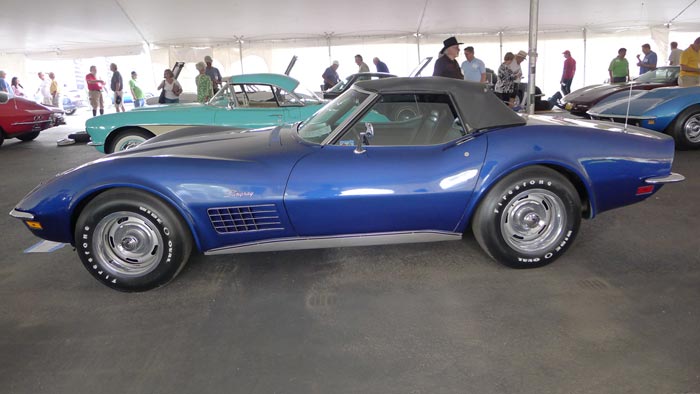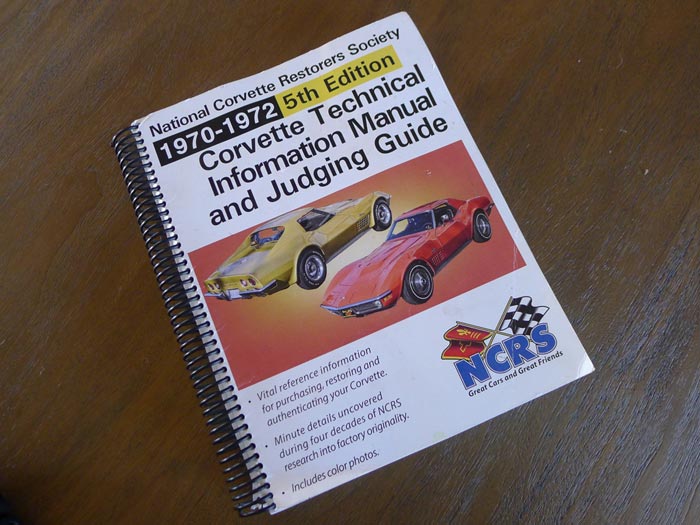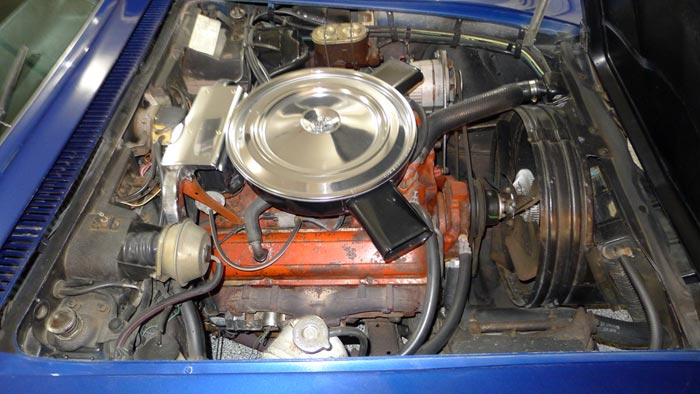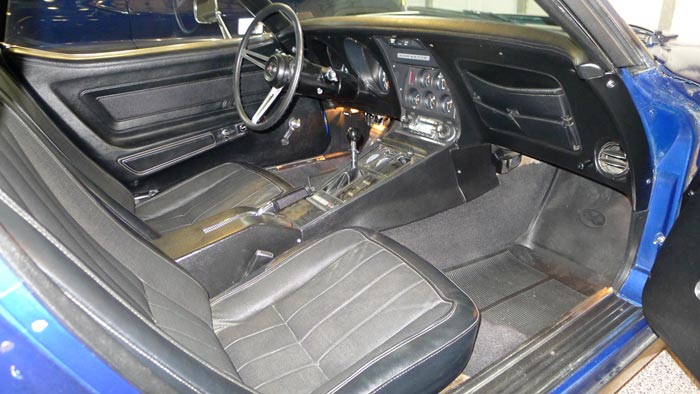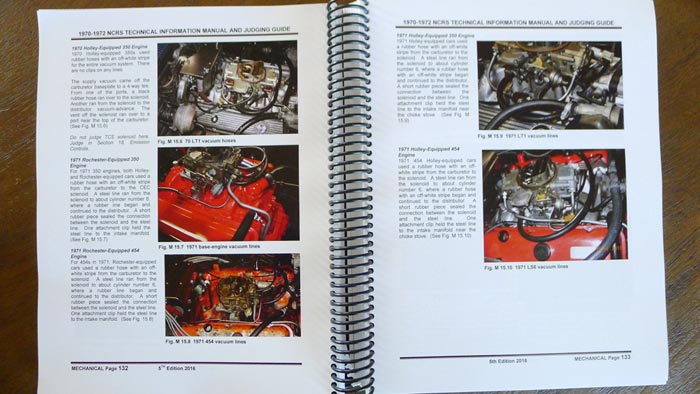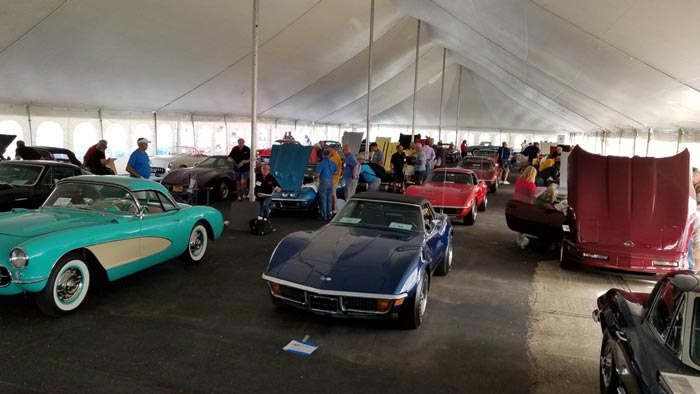Last week kicked off a series called On the Campaign Trail where I’ll be sharing my experiences with my 72 Corvette as I run it through NCRS, Bloomington Gold, and MCACN judging this year. Now that you know what I’ve got, we’ll look at what it took to get it ready for the judges. Rather than focus on all the individual tasks needed to prepare my car, this week I’ll mainly walk through some higher-level judging prep and sprinkle in some details throughout.
Based on previous my experience with C3 Corvettes, I was pretty certain that this was going to be a car I’d run through the various judging systems. Obviously, I checked it out thoroughly and drove it before buying, but I needed to go over things in more detail to decide on a full plan of action. Once I had the car back home I ordered the new 5th edition NCRS 1970-1972 Judging Guide and Technical Information Manual. The 5th edition is 364 pages loaded with color photos and endless detail showing just how these cars appeared after final assembly.
If you’re new to NCRS judging I also recommend buying the via the NCRS website to find an experienced member or judge in your area that could potentially help as well. I’ve done this a couple of times to find some help for pre-purchase inspections of out of state cars and had great results both times. Since the NCRS is an organized club you’ll find there’s a wealth of resources to help you prep for judging. And since many NCRS members cross over into the Bloomington Gold and Muscle Car and Corvette Nationals shows I’m sure you could contact either of those organizations as well and they’d be able to help point you in the right direction for judging prep assistance. Finally, there’s online discussion boards like the Corvette Forum and the NCRS Technical Discussion board where people can ask and answer questions of all types. If you come across some issue during your restoration, odds are someone else has come across it too and the answer may already be online. I mention the NCRS documents here because they are the most readily available and the most detailed. My experience has shown that If you prep to the NCRS judging standards you should be in good shape for Bloomington Gold and MCACN as well. Of course, do your homework first, don’t just take my word for it.
So with my NCRS judging guide now in hand I headed out to the CorvetteBlogger Restoration Center and began to mock-judge the car myself after downloading a copy of the 1970-1972 judging sheets from the NCRS website. The judging of Corvettes is broken down into 5 sections: Operations, Mechanical (engine compartment), Chassis, Exterior, and Interior. While going through each I section I not only include notes on the actual judging sheets, but I also create a separate to-do list which ultimately becomes the sheet I’ll follow to take care of the needed items. When judging the car yourself I recommend being heavy handed with your deductions. That is, if you think a judge will take one point, then you should take two. After I tallied the sheets I came up with a 93% score, just shy of the 94% needed for Top Flight and the 95% needed for Bloomington and MCACN Gold awards, but I now had a road map to get there. Based on my mock judging style I know that the 93% would most likely be higher at a judged event.
Having gone through the car in detail I now had confirmed what I already knew. This is a great candidate for the NCRS Flight and Bowtie awards as well as the Bloomington Survivor, Gold, and Benchmark awards. With that in mind I checked the 2018 calendar and circled 2 weekends in June. Early June would be the NCRS Motor City Regional and 2 weeks later would be Bloomington Gold. Pending those shows I’d be eligible to compete for Triple Diamond at the Muscle Car and Corvette Nationals in November.
Preparing an unrestored Corvette adds a degree of difficulty to the task at hand. I needed to place a priority on repairing things rather than replacing them. For the survivor-type awards, the judges want to see the actual parts that were on the car when it left St. Louis. They key is to carefully preserve what Chevrolet built 46 years ago.
There are no untouched Corvettes so naturally I had some things to work on. The first area I tend to look at prior to formal judging is operations as this is where you lose points in a hurry. A single failure can cost you up to 25 points whereas a condition or originality deduction can be as little as a point or two. Luckily, I just had a few things that weren’t functional on my car. For example, the hood alarm switch didn’t’ work, one high beam was burnt out, the clock wasn’t working, and the windshield washer squirters didn’t work.
After operations I next looked at items that would cost me the most points. One of the big-ticket items was the battery. The original Delco battery was long gone and the one currently in place would merit nearly a full deduction. Reproductions – aside from being pricey – don’t exactly match the originals and still get a minor deduct. When I started looking up repro batteries to order one I learned that the 1 company who makes them was having some troubles and no longer making them. I took some searching, but I did end up scoring the second-to-last one remaining at Corvette Central.
Elsewhere on the car I only had minor things to correct or procure. On the exterior, I had to procure a couple of license plate frames. That was it other than some paint cleanup with a clay bar and fresh, thorough waxing. Other than that battery, the interior was done save a couple of minor owner’s manual packet items. The chassis just required some minor detailing. The exhaust system had been replaced many years ago. Given the cost of a replacement system and the subsequent deductions that come with virtually all the replacement systems out there, the price vs dollars spent didn’t make sense to put a new one on the car. Instead, I elected to just paint my mufflers black like St. Louis did, add some part number stickers, take the deductions, and move on.
Once I had everything completed it was time to clean. The judging standards allow for “delivery dust” that is, a level of dirt consistent with what would have been on the car when delivered to its first customer. Again, this being an unrestored car meant things had to be gently wiped or cleaned to protect the original markings and finishes. My recommendation here is to start light with something like a dish soap and slowly work your way up to a Simple Green or other degreaser. Cleanliness is a very small portion of the overall judging score so don’t be afraid to err on the side of caution here. Once an original finish is gone, it’s not coming back.
Once everything was checked off the to-do list, it was time to mock judge the car again now with all the improvements in place. This time my result was much higher – 95.5%. As before my harsher judging style should have yielded a lower score than what I’d see on the real judging day. So far things are looking promising.
Between October 2017 and June 2018 I had brought the car up to a level ready for competing for our hobby’s biggest awards – or at least I thought so. Time to find out for real. Next stop was the NCRS Motor City Regional. Check in next week to see how I fared.
Source:
Photos by Steve Burns
Related:
Follow Along as I Campaign a 1972 Corvette Convertible
[PICS] The 2018 Bloomington Gold Corvette Show
[PICS] The NCRS Motor City Regional
-

